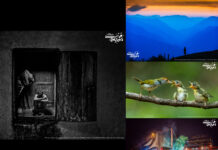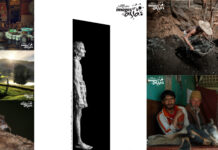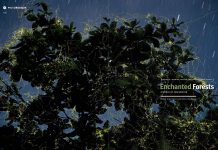Land Escapes: the mesmerising lines, curves and outlines of Japan’s volcanic landscapes that embody the flow of time, according to Goto Aki
Text: Rachel Genevieve Chia
Since 1993, Goto Aki has journeyed to 53 countries and regions in his travels around the world. His project, “Land Escapes”, extracts the flow of time from the earth through landscapes in Japan and abroad. Aki was a judge for the Canon PhotoMarathon in 2017, where he judged almost 4,000 entries across Singapore to crown winners in 3 different categories.
This Q&A was kindly supported by Canon PhotoMarathon.
Q: What inspires, influences and interests you? What do you try to communicate with your photographs, and how is that achieved?
GA: Images of the universe, most of which I view from NASA’s website, inspire and influence me to observe nature from the viewpoint of a bird – from the top-down. I believe that whatever I shoot is a small part of this universe. I’m currently interested in capturing Japanese landscapes. I try to capture these natural landscapes from different viewpoints, from a bird’s eye view or up-close. To capture the beauty of the elements, I usually carry four different lens – macro, wide-zoom, standard zoom and telephoto zoom – along on my expeditions.
Q: How do you get photos to look the way you want? How do you educate yourself to take better pictures? What motivates you to continue taking pictures?
GA: Our eyes see things in 3D. However, photography is captured in 2D. As such, what we see through our eyes is different from what the camera captures through a lens. I pay a lot of attention to the lights, lines, textures, shapes and colors of the photo subjects as they are important in photography. At the same time, I look for photo subjects that would translate beautifully and interestingly in 2D.
Trying to capture photo subjects in a new light is very important and it’s a never-ending learning cycle. I always look at present and past masterpieces before I commence a new project. You never know if your “new” idea has already been done by someone else. I recommend photography enthusiasts to look at masterpieces of various photographers and to understand the history behind each photo, before saying “hey, my photo is great!”.
Q: Locations and weather seem to be a crucial aspect to a successful picture. How do you handle these unpredictable factors?
GA: Before leaving home, I plan for different situations. During my shoot, I tend to not stick to one fixed location. Rather, I let myself be as flexible as possible to accommodate weather changes. I enjoy cloudy days because the light is softer. I enjoy the rain because the reflections formed are beautiful. I like what the Germans often say, “There is no bad weather.” I feel that taking advantage of any weather condition is the key to being a good photographer.
Q: What makes a good picture stand out from an average one? What did you look out for from submissions to the Canon PhotoMarathon?
GA: From my judging experience at this year’s Canon PhotoMarathon, I found many participants taking the same subjects at the same location. It’s hard to win the competition if your photo is similar to others. Perhaps participants in future competitions could take some time alone for 30 minutes to create their masterpiece. If they choose to stay with their friends throughout the competition, do pay attention to the light, colors and textures. Consider which elements would help make your subject beautiful and more interesting – for example, shooting from unique angles could add a different dimension to an otherwise neutral subject. This way, your photo will be different and stand out from the crowd.
Q: How do photography events like Canon Photo Marathon elevate the caliber of photography enthusiasts in Singapore? Do you have any comments on the photography scene?
GA: One of the best ways to pick up photography is by looking at other photographers’ work. Canon PhotoMarathon not only serves as a competition, it provides a learning opportunity for those who would like to improve their photography skills and viewpoints. From the submitted works, I saw that many showed people, buildings and other subjects all together in a single photo. Too much information in one photo produces an unclear image. It is important to think of what to capture and what NOT to capture at the same time. Making your photo simple is another key to improving your photography skills.
Check out the Canon PhotoMarathon winners at: http://www.canon.com.sg/photomarathon/gallery
[project_links]
[share]















